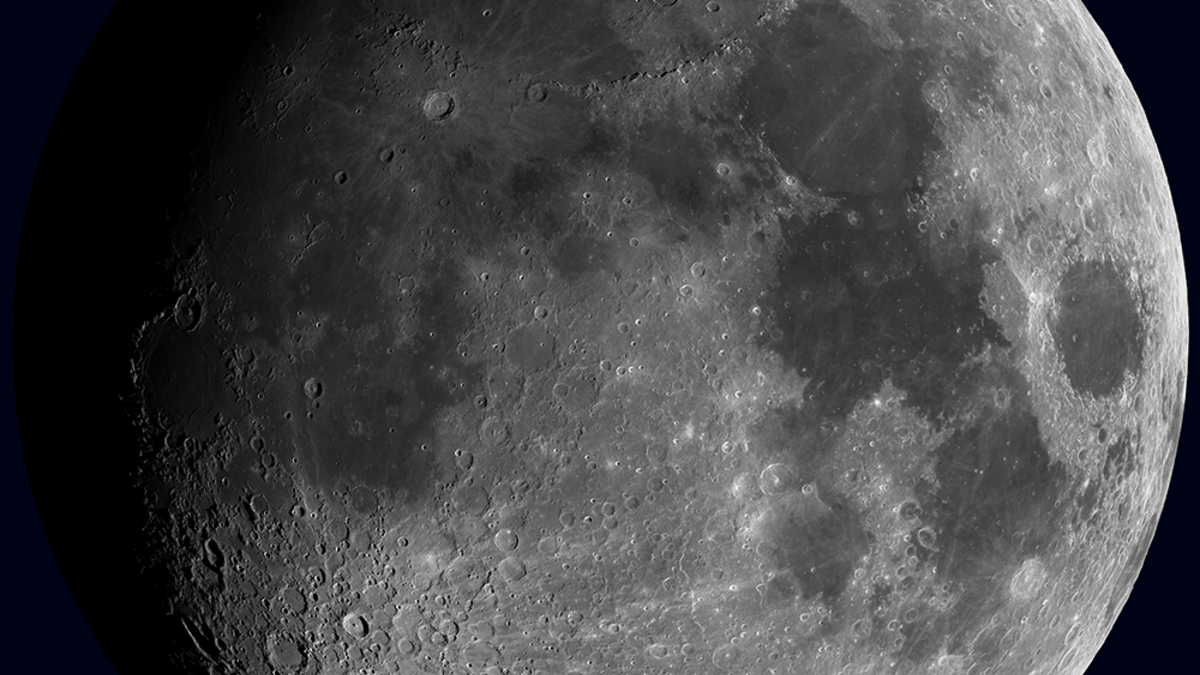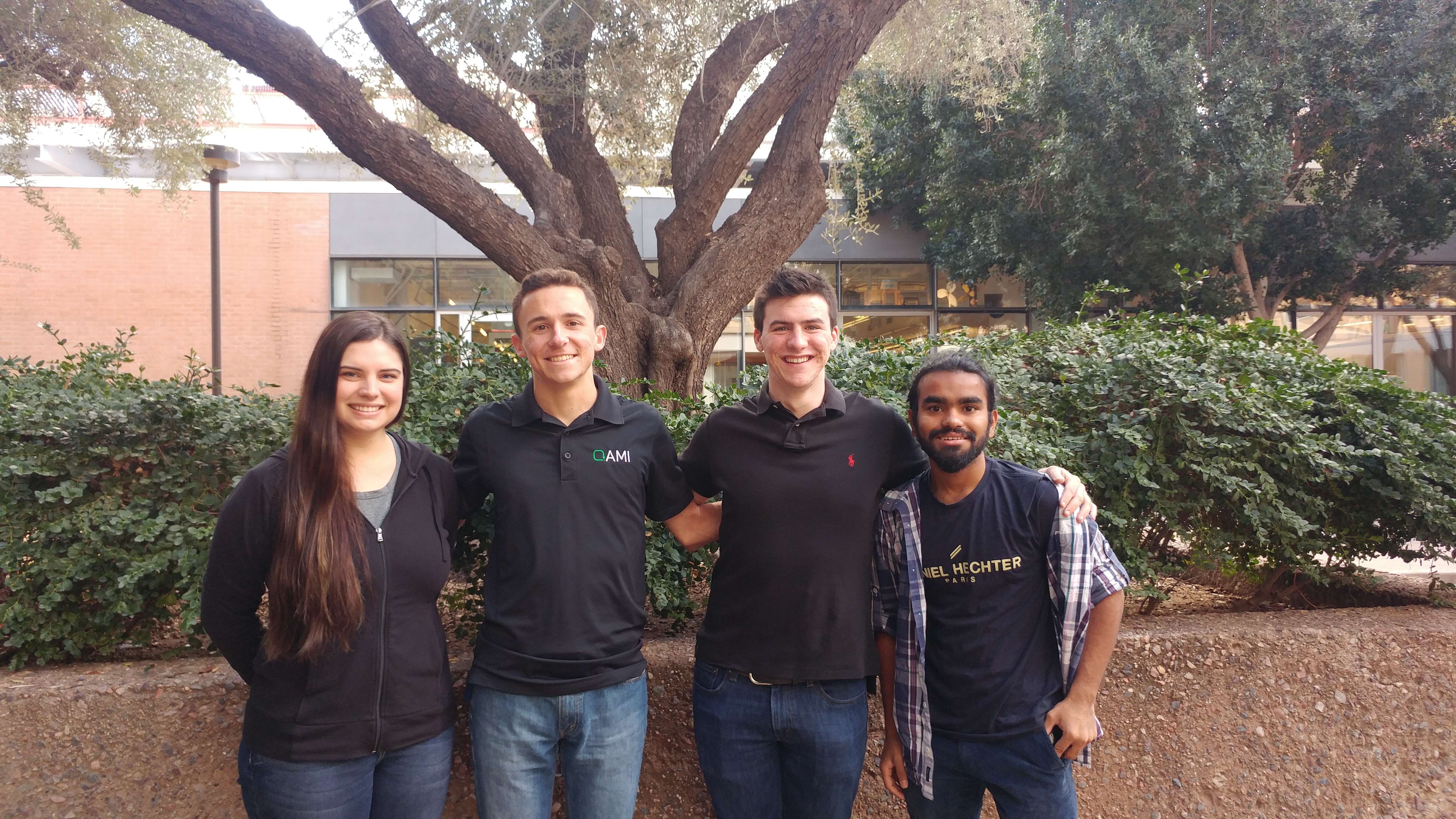Unlocking humanity’s future as an interplanetary species is no simple feat.
But students at Arizona State University and the Central University of Tamil Nadu in India are up for the challenge. The international collaboration is vying for a chance to induce photosynthesis on the moon.
“Photosynthesis is the basis of all life,” said Jonathon Barkl, a physics and economics major in the College of Liberal Arts and Sciences. “If it can happen on another planet, we’re one step closer to proving humanity can eventually do the same.”
The quest to help build sustainable life on the moon started with TeamIndus, the only Indian team competing for the Google Lunar XPRIZE. The $30 million international competition inspires innovators to develop low-cost methods of robotic space exploration and be the first privately funded team to land spacecraft on the moon, travel 500 meters and transmit high-definition video and images back to Earth.
TeamIndus has officially secured a launch contract with India’s Space Research Organization to send a lander to the moon in December 2017. As part of their mission to catalyze humankind as a multi-planetary species, TeamIndus created the Lab2Moon challenge to fly one youth experiment aboard their spacecraft to the moon.
“We have this amazing opportunity to send a payload to the lunar surface and conduct science that could impact the future of human exploration,” said Barkl, a member of the ASU/CUTN Lab2Moon team. “It blows my mind every time I think about it.”
During phase one of the challenge, TeamIndus received 3,000 entries from across the globe explaining a range of experiments to catalyze the evolution of humankind – from growing plants on the moon to investigating the lunar subsurface.
Twenty-five teams were shortlisted in the competition to build prototypes of their concept, including the ASU/CUTN Lab2Moon team who are eager to determine if photosynthesis can take place on the moon with its very hostile conditions.
“The premise of our mission is taking cyanobacteria – a really robust and primitive life form – and placing it on the lunar surface to see how it affects the photosynthesis process,” Barkl said. “If cyanobacteria can photosynthesize and thrive on this surface, we can use it as a means of potentially producing energy, food or even possibly terraforming another planet.”
Can you land on the moon?
Landing on the moon isn’t easy. Test your luck and show your support for the ASU/CUTN Lab2Moon team.
start missioncontinueplay again
The ASU/CUTN Lab2Moon team has been developing a strategy for putting their mission on the moon, from outlining power requirements to maintaining a safe environment for the bacteria. As they start to develop a full-on prototype of their project, they have to meet TeamIndus’ three criteria: be the size of a regular soda can, weigh less than 250 grams and connect to the spacecraft’s on-board computer.
“It’s a unique challenge to coordinate between the two universities,” Barkl said. “We’re halfway around the world and our colleagues are 12.5 hours ahead. We’ll message them while they’re trying to sleep or they’ll message us when we’re in class. The time coordination is hard, but it’s going well.”
During the development stage, the team has broken down responsibilities for the members at each university. Santosh and Sukanya Roychowdhury from CUTN will be developing the space capsule and testing it for space-grade readiness, structural integrity and its ability to withstand pressure and temperature. Barkl, Aidan McGirr and Autumn Conner from ASU will determine how to configure the electronics with the on-board computer, prepare the cyanobacteria and test the capsule’s sensors.
“Our mission is very heavy in science and data because we’re going to have about nine sensors whereas several other teams have only two or three,” Barkl said. “We have two main groups of sensors: one for maintaining a relatively friendly environment for the cyanobacteria and one for measuring the output of photosynthesis as the function of radiation on the lunar surface.”
Members of the Arizona State University and the Central University of Tamil Nadu Lab2Moon team — (from left) Autumn Conner, Jonathon Barkl and Aidan McGirr — along with Rakshith Dekshidar (right), a graduate student in electrical engineering, who has been helping the team configure the space capsule's sensors and electronics systems.
After their second design review with TeamIndus, the ASU/CUTN Lab2Moon team was invited to the final stage of the competition. The team will showcase their prototype to an international team of judges in Bangalore, India, on March 13, where they’ll find out who gets to fly with TeamIndus to the moon this year.
“We see professors from the School of Earth and Space Exploration all the time getting research grants from NASA and winning different missions. It’s inspiring to think, ‘Wow, I can go to space too,’ ” Barkl said. “ASU has never had a student mission of this caliber. We want to prove that not only are the faculty doing amazing science, but so are the students.”
Although Barkl is a student in the Department of Physics, he considers himself an honoree member of the School of Earth and Space Exploration. The research being conducted in the school was the reason he decided to attend the university and what inspired him to pursue this competition.
“The ASU community has really been a huge support for us,” Barkl said. “It’s a humbling experience to work with so many inspiring researchers who are so supportive and answer all our questions. If we had three years to research these questions, we could probably figure them out on our own. But with such a short turnaround time, they have really helped us make this project possible.”
The team’s mentors include Lindy Elkins-Tanton, planetary scientist and director of the School of Earth and Space Exploration; Philip Christensen, geologist and geophysicist; Scott Parazynski, retired NASA astronaut and current professor of practice; Ferran Garcia-Pichel, dean of natural sciences in the College of Liberal Arts and Sciences; Mark Jacobs, dean of Barrett, The Honors College and professor in the School of Life Sciences; Mark Naufel, director of strategic projects at the university; and Scott Smas, program manager of ASU’s Space Technology and Science Initiative.
“ASU has provided us with funding, supplies, facilities and mentorship,” Barkl said. “Having access to all these resources has pretty much changed the game for us.”
Barkl and McGirr, an astrophysics major, want to use the Lab2Moon project to kick off a miniature space agency and private, student-run organization at ASU where students can take what they are learning in the classroom and apply it in a meaningful way to advance space technologies.
“What I look forward to most is being able to say I’ve contributed to the goal of human colonization on other planets,” Barkl said. “And we want to prove that students can do meaningful work in the space sector too.”
To learn more about the ASU/CUTN Lab2Moon mission, visit the team’s website and Facebook page.
Top photo: The moon photographed by the Lunar Reconnaissance Orbiter Camera team at ASU. Photo by NASA/GSFC/Arizona State University
More Science and technology

Science meets play: ASU researcher makes developmental science hands-on for families
On a Friday morning at the Edna Vihel Arts Center in Tempe, toddlers dip paint brushes into bright colors, decorating paper fish. Nearby, children chase bubbles and move to music, while…

ASU water polo player defends the goal — and our data
Marie Rudasics is the last line of defense.Six players advance across the pool with a single objective in mind: making sure that yellow hydrogrip ball finds its way into the net. Rudasics, goalkeeper…

Diagnosing data corruption
You are in your doctor’s office for your annual physical and you notice the change. This year, your doctor no longer has your health history in five-inch stack of paperwork fastened together with…



